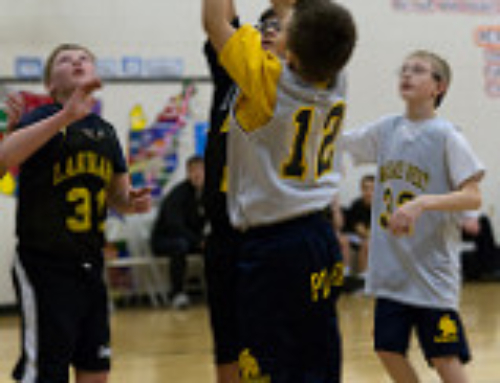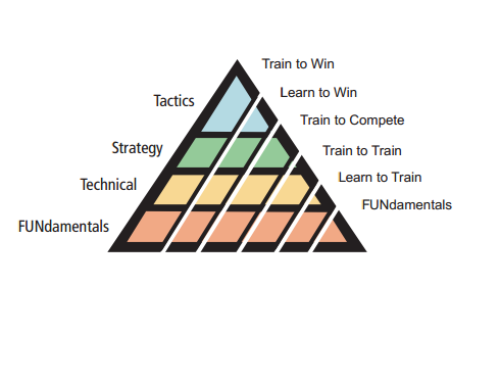Culture and Team Building
By Sean Glaze, Great Results Team Building
Culture is absolutely going to always determine the effectiveness of your strategy. No matter how good you are at X’s and O’s – and certainly it’s nice to have athleticism and talent – sometimes that can be derailed if you have a dysfunctional culture or if you’re not focused on getting the people to row in the same direction.
I had been a JV coach for probably seven or eight years and had just taken over my very first head coaching job at a girls’ basketball program. They had, I think, won two or three games the year before and had some pretty good little players, but obviously had not necessarily put stuff together in the very first year.
We were standing outside the team locker room, right after losing our playoff game and ending our season. I can still remember the look on the face of one player as she walked by. She’d always been that upbeat kid, but at the end of what had been a five and 21 season, she was beaten down just like we coaches and staff were.
In the locker room afterwards I gave the obligatory talk: “I know that we’re going to get better when we’ve got everybody coming back, and I appreciate the effort you put in,” etc.
As the girls took care of the system equipment and their personal items, I walked over to a sink. As I splashed water on my face and looked up in the mirror, I realized that if something was going to change, it had to be me that changed.
The problem was I had done everything that first season that I knew to do as a coach. We had done individual skill work, we had done all the pre-season conditioning, we had put the kids in the right positions in terms of X’s and O’s and offenses and defensive systems and felt pretty comfortable with what we were doing, but it wasn’t necessarily being done the way that was going to make us successful.
I didn’t know what to do differently and I walked over to stand next to my assistant. Our backs were there against the concrete wall, literally and figuratively, and as the kids got up, they started to leave one by one. There went Caroline, Andy, Alyson, Casey – and they walked out as individuals.
My assistant turned and said something to me, and that’s the moment that really changed. He said, “Coach, if we’re going to have a better program, we’re going to have to build a whole lot better relationships.” That was something that I had completely neglected in coaching guys and even in coaching girls.
My head had been in the sand because I didn’t think it was important. I was always that logical, left-brain type of guy: Hey, we’re going to take care of the X’s and O’s and strategy and all the other stuff. All the X’s and O’s and strategy and skill aren’t going to be effective if you don’t have relationships and the positive culture that will support the strategy being successful.
I spent a lot of time driving around the Southeast going to different college campuses and talking to coaches, not about X’s and O’s so much, but about their culture. I realized that we had ignored an important part of our program, and that was something that was completely on me.
The second year I had that exact same team. We designed opportunities for our kids to spend time together off the court and focused on relationships as much as we did on rebounds. Our kids had to eat, so we made sure that we had some meals together. Sometimes it was a pregame meal where we warped in some conversations in an effort to build relationships and avoid some of the cliques that they had established.
Goodness! It’s the exact same court, same starting five kids from a year before. We walked off the same court, towards the same locker room – but that second year, instead of heads down, chins in the chest and down and rejected, they were jumping and laughing and hugging each other. And they were screaming like high school girls only can, because instead of winning five games we had won 19 and we were going to the State playoffs. It was a completely different experience.
Not because of the X’s and O’s, not because of the players, but because the team was different. That was something that really opened my eyes, and it was the beginning of my journey into seeing the impact that team building could have.
If you had mentioned team building to me during the first few years of my coaching career, I would have rolled my eyes and imagined that unbelievable collection of fluffy, meaningless waste of time – Hey, we’re going to do stuff that’s going to actually have an impact instead of [whatever is currently in place] – where you’re holding hands and singing songs.
I think there’s a huge difference between team building and team bonding. Team bonding is spending some time together and I think there’s a value in that. Just laughing together or building a connection in terms of relationship is absolutely useful, and there are recreational team bonding experiences that are available. But I think that team building takes a very definite step or two beyond just a “Ha ha” experience.
The purpose of team building, as I would define it, is not simply to spend time together but to give people a chance to go through an experience, activity or a challenge – whether it’s a group of two or four or a whole-group type of activity. Then you debrief so that it’s something that is relevant and applicable.
So instead of just “Ha ha,” instead of just the enjoyable activity, you have “Aha” – an applicable and relevant insight. Now we’re going to do things differently and be more aware of ourselves personally and of our teammates, tomorrow and next week and next month; there is an actual return on that investment of time.
That’s the difference between team bonding/recreational activities and real team building, which is intentional: What can we do to focus ourselves on better communication? What can we do to focus ourselves on more effective accountability, on feedback circles? Those are things that have a positive and identifiable impact on team performance.
For more information on Sean, or to have him help your team improve, visit: https://greatresultsteambuilding.net







Leave A Comment